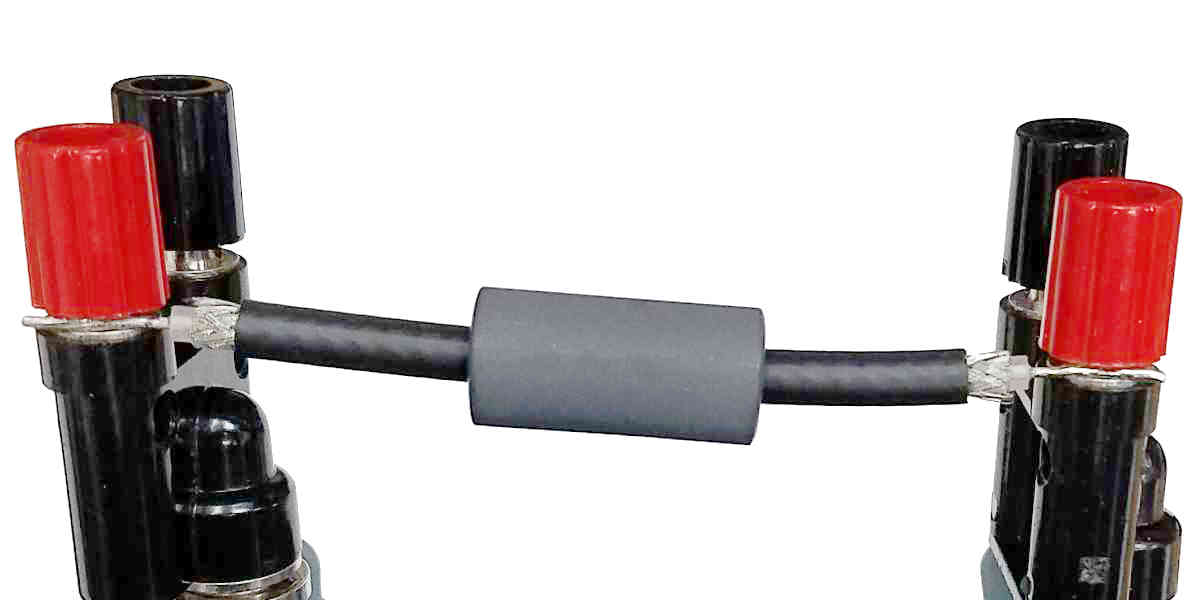Goal
I’ve long wanted to directly compare the ability of various ferrite materials to see how they restrain common mode currents. The mere fact so many recipes for ferrite compounds exist suggests profiling them is prudent. To that end an order was made to Mouser for a variety of ferrite products from a manufacturer called Fair-Rite. Here is the N9TAX choke along with a sampling of Fair-Rite chokes.
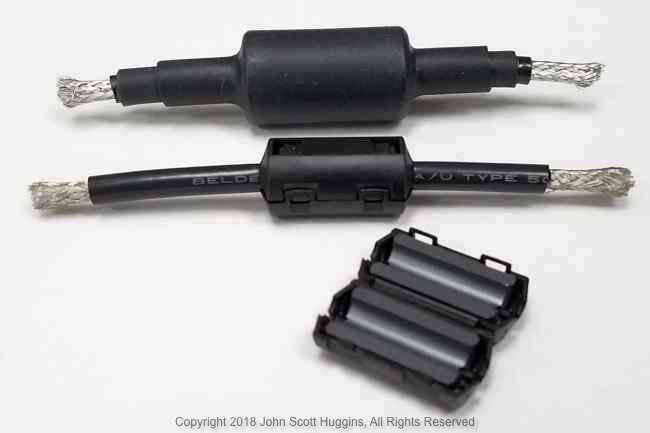
Fair-rite products for this test
In addition to the choke supplied with the N9TAX ladder line J antennas I added eight clamp-on products from Fair-Rite along with some Type 61 cylindrical “slide ons” I had in the drawer from previous testing. All these ferrites have inner dimensions perfect for RG-58 cable. Here is the big list.
- N9TAX Choke
- Fair-Rite 26 61 480002 Type 61 cylinder – 1.000 inch length of ferrite – 200-1000 MHz
- Fair-Rite 04 31 164951 – 1.420 inch length of housing – 1-300 MHz
- Fair-Rite 04 31 173951 – 0.984 inch length of housing – 1-300 MHz
- Fair-Rite 04 44 164951 – 1.420 inch length of housing – 25-300 MHz
- Fair-Rite 04 44 173951 – 0.984 inch length of housing – 25-300 MHz
- Fair-Rite 04 46 164951 – 1.420 inch length of housing – 25-300 MHz
- Fair-Rite 04 46 173951 – 0.984 inch length of housing – 25-300 MHz
- Fair-Rite 04 61 164951 – 1.420 inch length of housing – 200-1000 MHz
- Fair-Rite 04 75 181651 – 0.906 inch length of housing – 200kHz to 30 MHz
Mouser packaging varies immensely
Essentially the exact same basic type of product, ferrites for RG58, came from Mouser in the exact same shipment with differing levels of shock prevention.
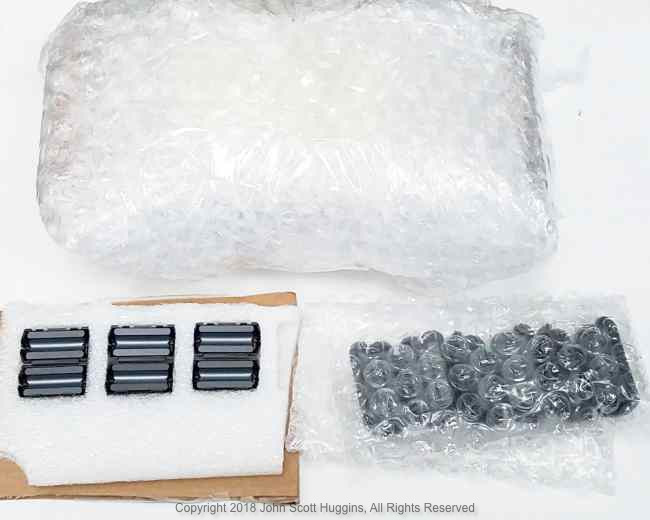
The figure above shows…
- some ferrites buried in multiple layers of bubble wrap,
- three splayed clampons nestled into a plastic foam cutout in between two layers of cardboard,
- three clampons simply tossed into one bubblewrap bag.
All three package styles were inside clear plastic bags with product identification information. This one reminds us of the fragile contents showing the cardboard sandwich technique…
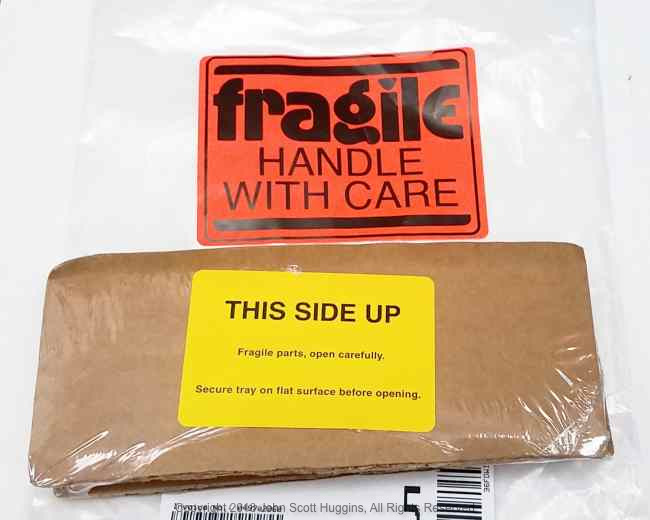
The ferrites below have the best treatment of all…
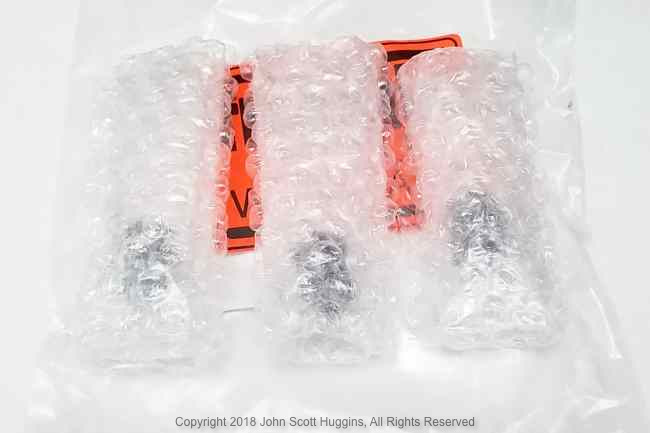
These ferrites are individually wrapped then bagged.
Not sure what to make of all this. Despite the same manufacturer, it appears each ferrite model resides in different areas of Mouser’s warehouse with varying levels of “concern” among the workers during packaging. Everything arrived with no damage so… whatever.
$ave $ome $erious money people
Despite the variances in packaging at Mouser concerning these fragile ferrites, purchasing your Fair-Rite products from them or other “normal” electronic suppliers is still the smart move. When you are ready to make your purchase, please please compare prices. You will quickly learn the various amateur radio resellers jack the price up by dramatic multiples. Fair-Rite makes practically all ferrites available today so you might as well not pay more and just get them direct from Mouser, et. al.
Example: Fair-Rite – 0444164951 from:
- Neobits – $5.95 each
- Amazon – $4.64 each
- Mouser – $1.60 each
- Newark – $1.60 each
- Digikey – $1.77 each
- PSC Electronics – $1.08 each
This is just one example showing prices as of October 2018. This stunning distribution of ferrite pricing is the rule for most sizes and shapes. Stay away from speciality sources such as most amateur radio businesses unless you just enjoy bragging about spending lots more.
First look at data
This series of tests produced lots of data to analyze. The next several articles will highlight various aspects to compare, but for now here is a graph of all the tests involving a single ferrite of each model along with untreated RG58 (thin black line) and the N9TAX choke…

Observations:
- That 0475 material certainly deserves a closer look at lower frequencies and we will do exactly that in a later post.
- It’s good to see the N9TAX ferrite among the top contenders suggesting some thought went into his choke selection process.
- The Type 61 cylinder takes the winner’s crown for best 2m and 440 performance… however…
- None of the contenders do well at UHF or should I say not well enough to sufficiently choke current.
Measurements of two or three in series, given the limited length of our test piece of RG58, will reveal how these devices team up for a better result.
Specific mission for these tests
All this supports an effort to generally aid understanding and specifically tame the UHF currents found in this E-Plane measurement of the N9TAX J antenna…
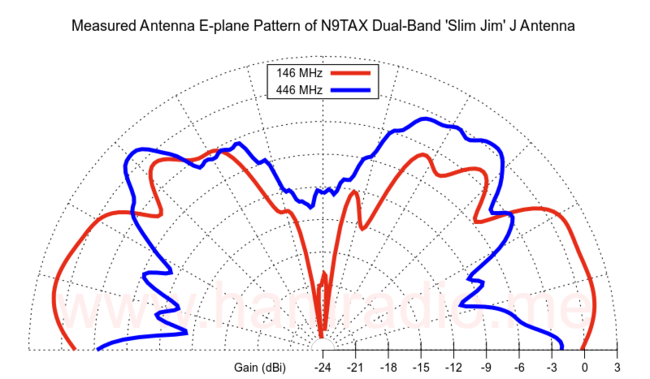
My previous review of the N9TAX J antenna found currents above the coaxial cable chokes, but a later purchase reveals much less UHF current in the upper section of the antenna. While producing a decent pattern at VHF, the UHF = Hurl! Since the UHF coaxial chokes in the “J” portion of the N9TAX dual band antenna seem to do their job, this leaves only feedline currents as the reason for the up-tilt at UHF. This test did have about 5 feet of feedline below the antenna… plenty long enough to spoil the overall pattern if common-mode currents flow. Can the addition of off-the-shelf clamp-on ferrites improve the performance of the N9TAX dual band 2m/440 J antenna? We hope so, but aim to find out with real testing.
Check for more posts in the next several week.
